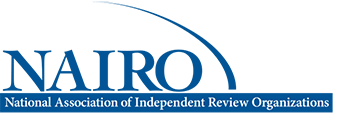Reviewer anonymity is an ongoing issue in the independent review industry. The current industry standard for independent review organizations (IROs) is to prevent the disclosure of the reviewer’s identity unless required by contract, statute, or law. The rationale for maintaining anonymity centers on maintaining the overall quality and integrity of the independent review and maintaining the safety of the reviewer. By allowing the reviewer to remain anonymous, NAIRO believes that reviewers are shielded from undue influence and potential harm. Anonymity allows a reviewer to make the most appropriate decision without outside pressure from other review stakeholders. The National Association of Insurance Commissioners (NAIC) Uniform Health Carrier External Review Model Act (Model Act) and several states have enacted specific language protecting reviewer’s identities and their ability to make unfettered decisions. For example, Section 14 of the Model Act holds IROs harmless for their decisions1. Recently, the Alaska Legislature released Bulletin B 25-05 protecting the identity of IRO reviewers pursuant to AS 21.06.060(f) and (g).
Consumer advocates and treating providers have countered that disclosing a reviewer’s identity allows for additional transparency in the review process. Recently, many treating or attending providers have disclosed reviewers’ identities to stakeholders, including to the insured. Treating providers can access the reviewer’s name from peer-to-peer conversation. In the external review process, the insured is informed of the IRO assigned to their case but does not have access to the reviewer’s name. Information about the reviewer’s qualifications and experience is shared as part of the review decision. In some cases, there have been reported incidents of threats or harassment against reviewers, including actions against reviewers’ medical licenses. As a result of this trend, qualified reviewers may decline to participate in the independent review process, which could severely limit reviewer availability, access, and the overall scope of reviewer coverage from both a geographic and specialty perspective. To offset this potential hazard, reviewers may demand an increased rate of payment to continue to provide IRO reviews. The potential scarcity of reviewers could also force IROs to raise their rates to ensure they can provide appropriate specialty coverage of all review types. Since the insurer pays for state sponsored external reviews in most circumstances, they may pass on the increased cost directly to the insured by raising premiums and related fees.

